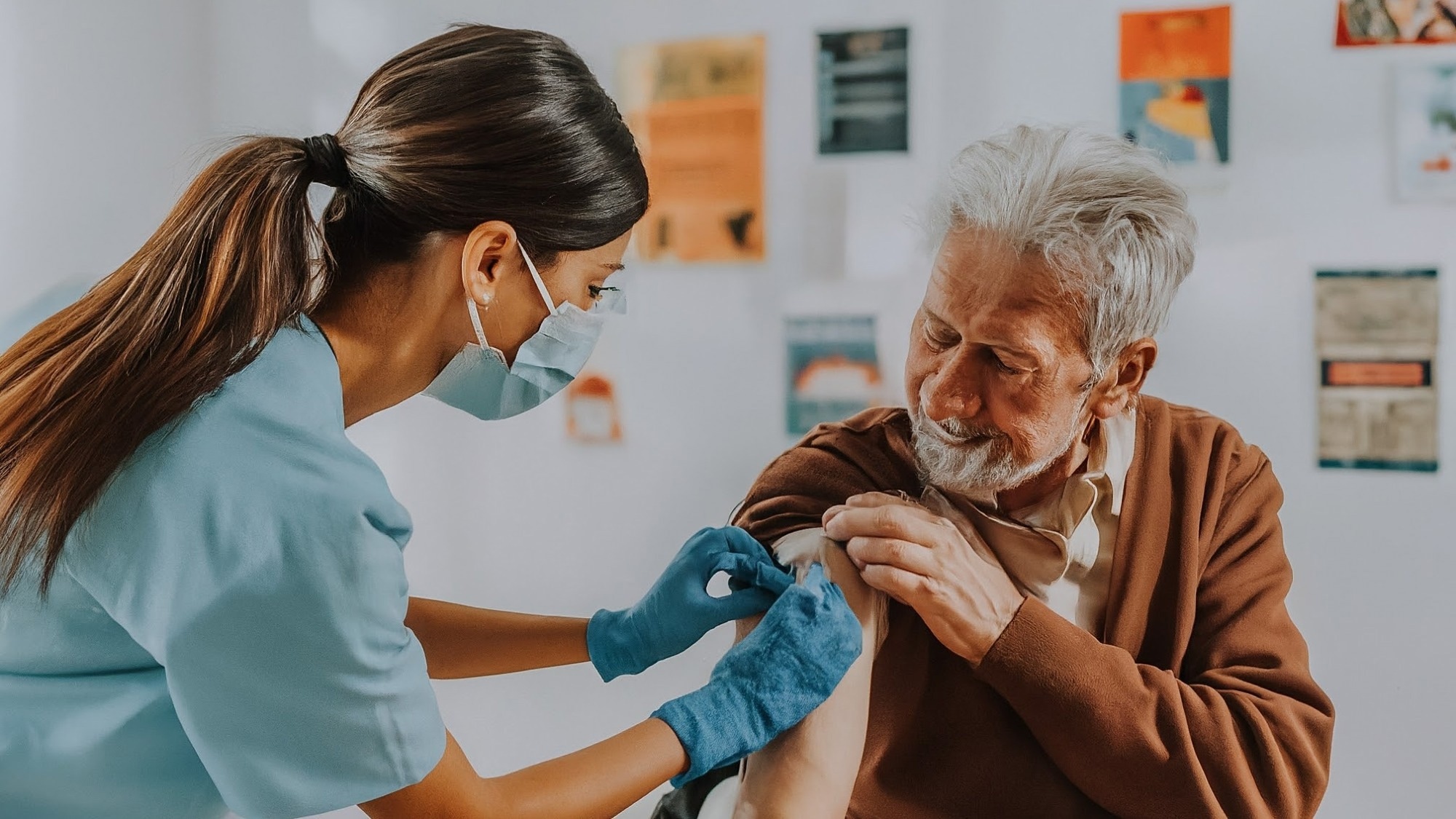This study examines global COVID-19 vaccination efforts for older adults and uncovers striking gaps in access and inconsistencies in vaccination schedules.
 Study: Global landscape of COVID-19 vaccination programmes for older adults: a descriptive study. Image Credit: Shutterstock AI/Shutterstock.com
Study: Global landscape of COVID-19 vaccination programmes for older adults: a descriptive study. Image Credit: Shutterstock AI/Shutterstock.com
A recent study published in The Lancet provides a global overview of coronavirus disease 2019 (COVID-19) vaccination programs among the elderly.
Achieving COVID-19 vaccine equity
Despite the emergence of novel severe acute respiratory syndrome coronavirus 2 (SARS-CoV-2) variants, the World Health Organization (WHO) officially withdrew the status of ‘public health emergency’ from COVID-19 in May 2023.
Vaccination has been instrumental in reducing the spread of SARS-CoV-2 and preventing severe disease in infected individuals. Updated booster vaccine doses have been developed to ensure continued protection against novel viral variants, particularly in high-risk patient populations.
Vaccine equity aims to distribute the most effective and variant-specific vaccines to eligible recipients rather than providing any available vaccine, as many COVID-19 vaccines are now ineffective against emerging SARS-CoV-2 variants and subvariants. Achieving vaccine equity requires continuous monitoring to update strategies that will expand access and uptake.
About the study
Data for the study were obtained from public databases that provided information on the different types of vaccines used, vaccine regimens, eligible age groups, and vaccine coverage stratified by each country and age group. The last available information was dated July 10, 2024.
Sources included government and health department websites, official reports, institutional and organizational data, and cross-checked media reports based on official sources. The aim of the current study was to assess the degree of success in achieving complete primary series immunization of older adults and providing an additional booster dose to 80% of them.
Official data was the only source in 45 countries, whereas media and combined sources provided data for 77 and 70 countries, respectively. Most countries provided medium-quality data, with over half of the metrics reported.
Types of vaccines in use
Using data from 192 countries, 71 vaccines, 49 of which were monovalent, were administered to older people. Seventy-nine countries used one or more of the 22 vaccines developed to protect against SARS-CoV-2 variants of concern (VOCs), including eight monovalent and four bivalent vaccines that targeted the original and Omicron strains, respectively.
Monovalent SARS-CoV-2 Beta vaccines and one Gamma vaccine were used in 12 countries and one country, respectively. Monovalent vaccines against the original strain of SARS-CoV-2 have mostly been stopped or discontinued, although some are used as boosters in 41 countries.
Multivalent vaccines were approved in China. These include bivalent vaccines against the original SARS-CoV-2 strain followed by a series culminating in quadrivalent vaccines targeting Beta and various Omicron subvariants.
In 122 countries, older people were offered an additional booster dose, whereas the remaining countries offered a primary series or a single booster dose. Seasonal booster doses for the elderly were offered in 33 countries during fall or winter months, some of which also provided spring booster doses. Older people were among the high-priority groups in 96 countries.
Primary vs second/later booster coverage among older people
Although 81% of people completed the primary series, this varied from 91% in the Western Pacific region to 47% in African regions.
A median of 53% of individuals received their first vaccine dose, with 74% and 5.5% of individuals in the European and African regions having the highest and lowest coverage, respectively. A total of 40 countries provided the second booster dose at a median coverage of 44.3%, which ranged from 0.4% in Romania to 87% in Denmark. About 23.6% of nations offered a newer COVID-19 vaccine.
Overall, elderly people were significantly less likely to receive either a second booster or a newer vaccine. Across countries, the COVID-19 vaccination program shows unequal progress, with vaccine inequity largely affecting the elderly.
It is essential to establish robust and timely vaccination surveillance systems, especially to facilitate data-driven policies that promote COVID-19 vaccination campaigns worldwide.”
The WHO goal would be met with a target of 1.01 doses for each person among the older population, compared to 1.43 doses for each person for the second goal. This varies by region, with 1.92 and 2.72 doses for each person required for a second booster or newer vaccine, respectively, in the African region compared to 0.70 and 0.71, respectively, in the Americas.
Conclusion
COVID-19 vaccination coverage has progressed unevenly throughout the world. Moreover, 1.01 and 1.43 doses for each person are needed to achieve complete primary series and booster coverage or 80%second/newer booster coverage, respectively, among the elderly.
A collaborative surveillance system similar to that for influenza… would enable real-time monitoring and adjustment of vaccine compositions.”
High vaccine coverage demands significant resource allocation to healthcare systems due to the high costs of vaccinating the population, even when vaccines are donated. Thus, these federal budgets should be prioritized to achieve complete vaccine coverage.
The relevance of COVID-19 vaccination has declined due to high levels of population immunity. Thus, these programs must be periodically assessed to determine their cost-effectiveness.




